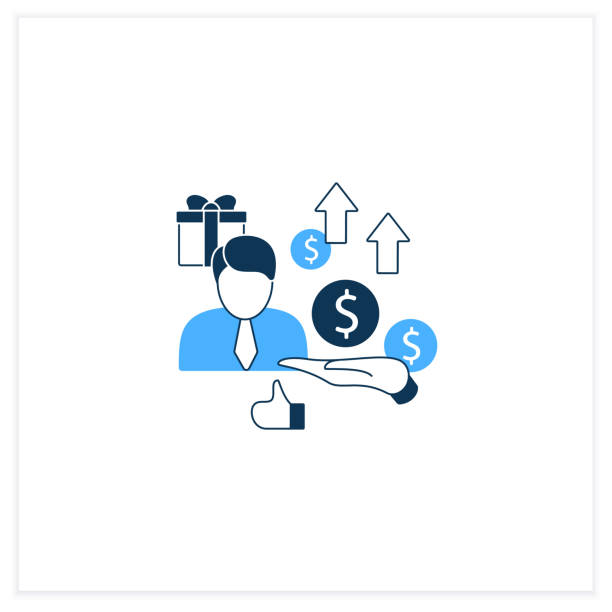
In the ever-evolving world of banking and financial services, efficiency, accuracy, and customer experience are the cornerstones of success. As consumer expectations rise and digital transformation accelerates, traditional lending methods are rapidly being replaced by intelligent, technology-driven solutions. At the forefront of this revolution is loan origination software, a powerful system designed to automate, simplify, and optimize every stage of the lending process. For banks and financial institutions, adopting next-generation loan origination software is not just an operational upgrade—it is a strategic move to stay competitive in a digital-first economy.
Understanding the Role of Loan Origination Software
Loan origination software (LOS) is a comprehensive technology platform that streamlines the end-to-end loan lifecycle—from application to disbursement. It integrates customer onboarding, credit analysis, underwriting, documentation, and approval processes into a single, automated workflow. This not only enhances speed and accuracy but also reduces human error and operational costs.
Banks using advanced LOS systems can deliver faster turnaround times, maintain regulatory compliance, and provide superior customer experiences. By digitizing loan origination, financial institutions eliminate manual dependencies, improve data visibility, and accelerate lending operations. Moreover, the scalability and flexibility of modern LOS platforms make them ideal for institutions managing diverse lending portfolios, including personal, business, mortgage, and vehicle loans.
Why Banks Need Next-Gen Loan Origination Software
In today’s hyper-digital economy, customers demand instant credit decisions, transparency, and seamless digital interactions. Traditional banking systems—often built on outdated infrastructure—struggle to keep up with this demand. Modern loan origination software enables banks to overcome these limitations by introducing automation, intelligent decisioning, and real-time data analysis.
The ability to evaluate a borrower’s creditworthiness using data-driven algorithms significantly enhances risk assessment. Machine learning models integrated within LOS platforms continuously learn from historical data, improving decision-making accuracy. As a result, banks can approve loans faster, reduce defaults, and provide credit to a broader audience, including underbanked and new-to-credit customers.
The Shift Toward Digital Lending Systems
The transformation toward a Digital Lending System has become an industry standard. This system allows banks to offer end-to-end digital journeys—where customers can apply for loans, upload documents, receive instant approvals, and track their loan status—all without visiting a branch. Integrating LOS into this ecosystem makes it possible for banks to offer personalized, omnichannel lending experiences while maintaining operational control and compliance.
A well-implemented loan origination software acts as the digital backbone of lending operations. It bridges the gap between customer expectations and institutional capabilities, allowing banks to launch new credit products faster, manage risks better, and achieve higher customer retention. By automating the origination process, lenders gain the agility required to meet the needs of today’s tech-savvy borrowers.
Key Features of Next-Gen Loan Origination Software
Modern LOS platforms bring a host of innovative features designed to enhance operational efficiency and scalability for banks:
- Automated Credit Decisioning
Advanced LOS solutions use AI-driven scoring models to assess creditworthiness instantly, minimizing human intervention and bias. - Seamless Integrations
LOS integrates with multiple third-party systems—such as credit bureaus, e-signature providers, and payment gateways—enabling smooth data flow and faster approvals. - Data-Driven Risk Management
Predictive analytics tools help banks identify potential delinquencies and take proactive steps to mitigate risks. - Scalability and Cloud Deployment
Cloud-based architectures allow banks to scale operations effortlessly, ensuring consistent performance even during peak loan application periods. - Compliance and Audit Readiness
In-built compliance frameworks help institutions adhere to evolving regulatory standards, reducing the risk of penalties and ensuring data integrity. - Enhanced Customer Experience
Borrowers can enjoy a smooth, transparent experience with real-time application tracking, instant notifications, and personalized loan offers.
Driving Efficiency through Automation
Automation lies at the core of loan origination software, transforming the way banks manage their credit processes. By automating document verification, credit scoring, and approval workflows, banks can reduce turnaround time from days to minutes. This improved efficiency not only benefits customers but also strengthens internal operations by freeing up employees to focus on value-driven tasks like customer engagement and product development.
Automation also brings consistency in credit evaluation. When every application is processed using standardized rules and algorithms, the risk of human error and bias decreases significantly. This ensures fair lending practices and improves overall portfolio quality.
Data Analytics: Empowering Smarter Lending Decisions
In the digital age, data is the foundation of smarter decision-making. Modern loan origination software leverages advanced analytics and artificial intelligence to provide banks with actionable insights. From evaluating borrower behavior to predicting repayment capacity, data analytics empowers lenders to make strategic lending decisions.
Moreover, real-time data visualization helps management teams monitor key performance indicators (KPIs) such as approval rates, delinquency trends, and loan performance metrics. These insights are invaluable for optimizing credit policies and developing new financial products that align with customer needs.
Digital Lending System and the Future of Banking
The integration of loan origination software into a Digital Lending System is reshaping the future of banking. This combination enables banks to serve customers 24/7 through digital channels while maintaining full control over compliance, security, and reporting. It eliminates physical bottlenecks, reduces operational costs, and creates opportunities for innovation in product design and customer engagement.
Furthermore, with the growth of embedded finance and open banking, LOS platforms are becoming essential for partnerships between banks and fintechs. These collaborations enable seamless lending across digital ecosystems, empowering banks to reach new markets and deliver credit more efficiently.
Top Companies Providing Loan Origination Software Solutions
Several technology providers are driving innovation in the LOS space, offering banks and financial institutions advanced tools to enhance their digital lending capabilities. Some of the top companies providing loan origination software services include:
- Pennant – A leading technology company offering end-to-end lending solutions that empower banks with automation, analytics, and agility. Pennant’s intelligent loan origination software helps institutions streamline workflows, enhance borrower experiences, and achieve faster loan turnaround times.
- Finastra – Renowned for its cloud-based lending solutions that enable real-time credit decisioning and seamless customer onboarding.
- FIS – Provides enterprise-level digital lending software designed for scalability and compliance, catering to banks and financial organizations worldwide.
- Temenos – Offers AI-powered LOS platforms that support digital onboarding, credit scoring, and end-to-end loan lifecycle management.
- Nucleus Software – Known for its robust digital lending systems that provide a unified view of loan origination, servicing, and collections.
These companies are leading the global shift toward intelligent lending ecosystems, empowering banks to transform their operations and deliver superior financial services in the digital age.
Overcoming Challenges in Loan Origination
Despite the numerous advantages of adopting LOS platforms, banks must overcome certain challenges during implementation. Data migration from legacy systems, integration with existing core banking infrastructure, and change management are critical factors to address. Choosing a scalable and customizable solution that aligns with business goals is essential for success.
Moreover, ensuring cybersecurity and data privacy remains a top priority. Next-gen LOS providers now embed advanced encryption, multi-factor authentication, and audit trails to safeguard sensitive customer information and ensure compliance with data protection laws.
Conclusion
As the banking landscape continues to evolve, the need for agility, speed, and customer-centric innovation has never been greater. Loan origination software stands at the center of this transformation, redefining how banks process, approve, and manage loans. By combining automation, analytics, and cloud technology, LOS platforms empower financial institutions to deliver faster, more accurate, and personalized lending experiences.
Integrated within a Digital Lending System, these solutions enable banks to expand their reach, optimize credit portfolios, and build stronger customer relationships. Companies like Pennant are at the forefront of this digital shift, offering intelligent and scalable loan origination solutions that help banks stay competitive in the digital era.
In an age where lending is no longer confined to physical branches, embracing next-gen loan origination software is the key to unlocking growth, improving efficiency, and ensuring long-term sustainability for modern financial institutions.




